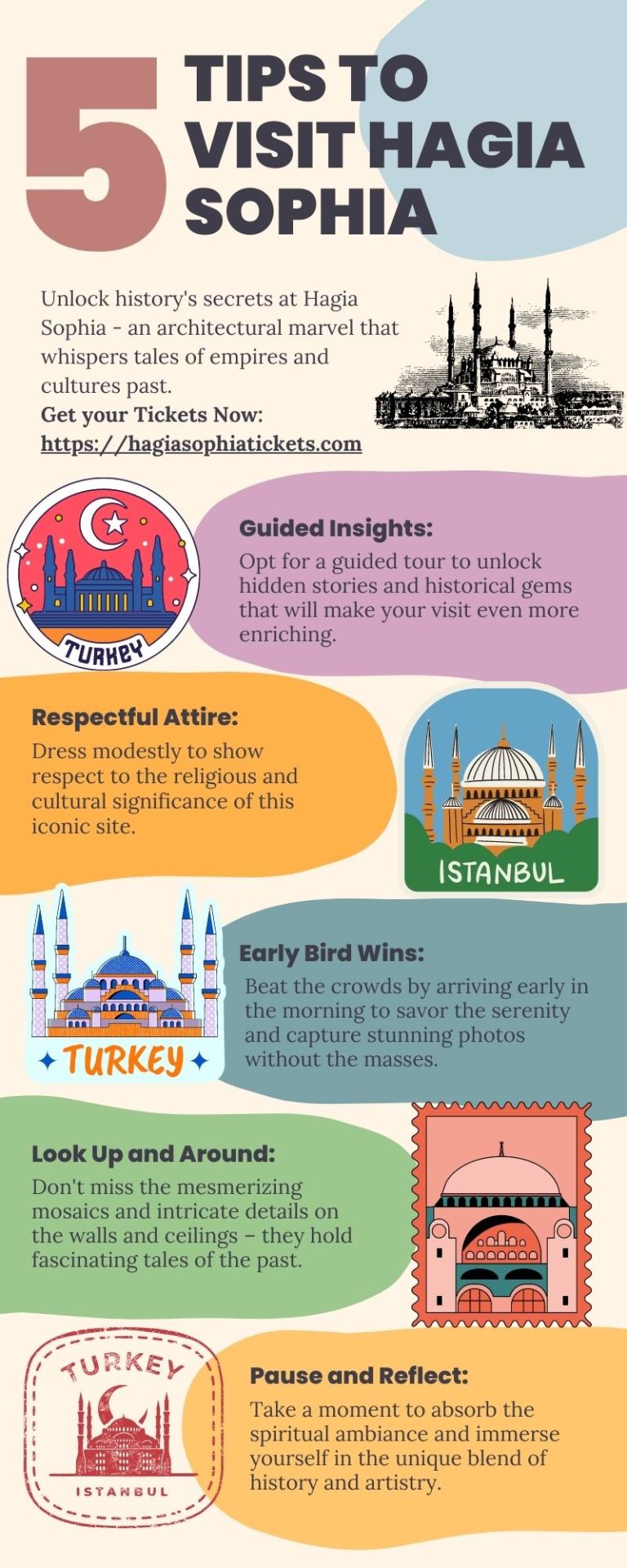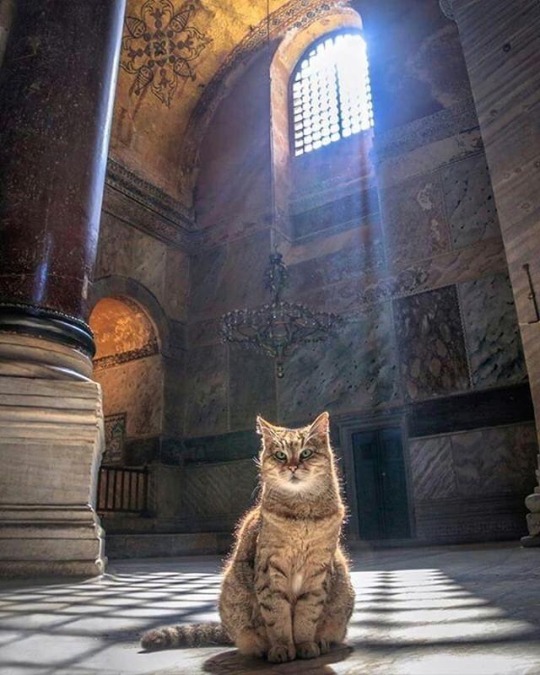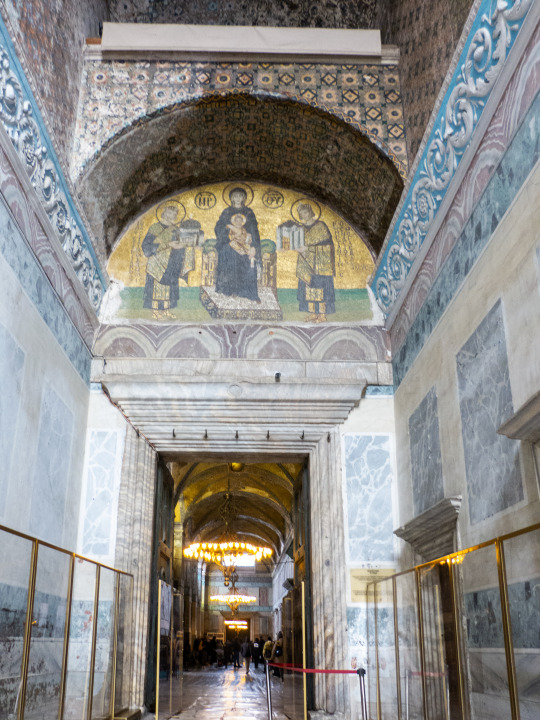#Hagia Sophia Church
Explore tagged Tumblr posts
Text

When visiting Hagia Sophia, consider these helpful tips to make the most of your experience. Firstly, plan your visit for weekdays, preferably Tuesdays to Thursdays, to avoid the weekend crowds. Arriving early in the morning shortly after the opening time allows for a more peaceful and immersive exploration of the monument. If possible, visit during the shoulder seasons of spring (April to May) or autumn (September to October) to avoid peak tourist numbers. Be mindful of local events and holidays to plan your trip around potential busy periods. Lastly, respect the cultural significance of Hagia Sophia, and dress modestly out of respect for its religious history and current status. Love Hagia Sophia! Learn about some amazing facts about Hagia Sophia here: 8 Amazing Historical Facts About Hagia Sophia
#travel#travel Istanbul#Hagia Sophia#Turkey#Hagia Sophia Mosque#Hagia Sophia Museum#Hagia Sophia Dome#Tips to visit Hagia Sophia#Explore Hagia Sophia#HagiaSophia#Hagia Sophia Church#Byzantine Art#Islamic Elements#Minarets#Hagia Sophia Mosaics#Istabul
2 notes
·
View notes
Text
Exploring Hagia Sophia: A Journey Through History And Beauty
Hagia Sophia, one of the most iconic landmarks in Istanbul, stands as a magnificent testament to the city’s rich and diverse history. Known as Ayasofya in Turkish, this architectural wonder has been a church, a mosque, and a museum, and today it serves as an active mosque. Its story is as fascinating as its breathtaking design, making it a must-visit destination for travelers worldwide. A Brief…

View On WordPress
#ancient architecture#architectural wonders#beautiful Istanbul#Byzantine architecture#cultural Istanbul#Hagia Sophia#Hagia Sophia architecture#Hagia Sophia church#Hagia Sophia details#Hagia Sophia dome#Hagia Sophia guide#Hagia Sophia history#Hagia Sophia interior#Hagia Sophia Istanbul#Hagia Sophia mosque#Hagia Sophia museum#Hagia Sophia secrets#Hagia Sophia tour#Hagia Sophia travel guide#historical landmarks#historical sites Istanbul#history of Hagia Sophia#iconic buildings Istanbul#Istanbul#Istanbul attractions#Istanbul landmarks#Istanbul tourism#Istanbul travel tips#Istanbul travel vlog#Istanbul UNESCO
0 notes
Text
Discovering the Enchanting Hagia Sophia Dome: A Timeless Wonder
Hagia Sophia, meaning "Holy Wisdom" in Greek, was originally built as a Christian cathedral during the reign of Emperor Justinian I in the 6th century. The construction of the Hagia Sophia Dome began in 532 CE and was a feat of engineering brilliance. It took only five years to complete, a remarkable achievement considering its complexity.
The Marvelous Dome Architecture The Hagia Sophia Dome is a true marvel of architectural innovation. Designed by gifted architects Anthemius of Tralles and Isidore of Miletus, the dome's construction was groundbreaking. It features an ingenious pendentive construction—a triangular, curved segment that supports the dome's transition from its circular base to the square walls below.
The architects used a combination of bricks and lightweight mortar to reduce the overall weight on the pendentives, allowing the dome to soar to a height of approximately 55.6 meters (182 feet). The result is a breathtakingly beautiful and structurally sound dome that continues to inspire architects and engineers to this day.
A Tale of Symbolism and Transitions Over the centuries, the Hagia Sophia Dome has witnessed significant transitions and transformations. Originally a Christian cathedral, it hosted numerous religious ceremonies and imperial events. With the conquest of Constantinople by the Ottoman Empire in 1453, it was converted into a mosque, adorned with Islamic elements such as minarets, mihrabs, and calligraphy.
In 1935, under the administration of Mustafa Kemal Atatürk, Hagia Sophia was transformed into a museum, becoming a symbol of secularism and celebrating Turkey's diverse history and cultural heritage. This cultural treasure has served as a bridge between different cultures and religions, representing unity and understanding.
The Controversy Despite its historical significance, the Hagia Sophia Dome has been a subject of controversy in modern times. The debates revolve around its status as a museum, mosque, or interfaith space. While its past transitions are a testament to its ability to adapt and embrace change, the question of its current purpose sparks passionate discussions among various stakeholders.
Preserving the Treasure Recognizing its value as a UNESCO World Heritage Site, the Turkish government, along with international organizations, has devoted considerable efforts to preserve and restore the Hagia Sophia Dome. The goal is to ensure that this extraordinary monument stands tall for generations to come, enchanting visitors from all corners of the world.
A Timeless Wonder The Hagia Sophia Dome remains a timeless wonder, weaving together the threads of history, art, and architecture. Its breathtaking design and rich history offer a glimpse into the human spirit's creativity and perseverance. As you stand beneath its awe-inspiring dome, you can't help but be transported back in time, feeling the echoes of the past and the weight of history.
Visiting the Hagia Sophia Dome is an unforgettable experience, where you can immerse yourself in the cultural tapestry of Turkey and marvel at the brilliance of ancient architecture. Each intricate detail of the dome tells a story, and every corner holds secrets waiting to be discovered.
Whether you are an architecture enthusiast, a history buff, or simply a curious traveler, the Hagia Sophia Dome will leave an indelible mark on your soul. Its allure, beauty, and significance will continue to inspire generations, reminding us of the remarkable achievements of humanity and the importance of preserving our cultural heritage.
So, the next time you find yourself in Istanbul, don't miss the opportunity to experience the enchantment of the Hagia Sophia Dome—a timeless wonder that stands as a testament to the ingenuity and creativity of human civilization.
#Hagia Sophia#Hagia Sophia Dome#Hagia Sophia Inetriors#Hagia Sophia Architecture#Istanbul#Explore Hagia Sophia#Hagia Sophia Interiors#Hagia Sophia Mosque#Hagia Sophia Museum#Hagia Sophia Church#Turkey#Visit Hagia Sophia#Mosque
1 note
·
View note
Text


Hagia Sophia Grand Mosque by paandeli.
#hagia sophia#ayasofya#mosque#church#istanbul#turkey#türkiye#roman empire#ottoman#ottoman empire#greek orthodox#latin catholic#justinian#byzantine#alternative#aesthetic#dark academia#dark academic aesthetic#dark aesthetic#aestheitcs#dark#art#light acadamia aesthetic#light academia
533 notes
·
View notes
Text
Emperor Door ∼ Hagia Sophia

#Hagia Sophia#Emperor Door#Religious Art#Deesis#Mosaic#Art#Bronze#Oak#Door#Ottoman#Mosque#Byzantium#Church#Justinian#Architecture#Constantinople#Ayasofya#Museum#Istanbul#Turkey
105 notes
·
View notes
Text




Hagia Sophia, Istanbul, Türkiye
Instagram: janritter10
#world#amazing#goals#nice#goodmorning#love#photography#photoshoot#travel#beautiful#istanbul#hagia sophia#church#mosque#prayer#pray for palestine#praying#architecture#history#stunning#trending#cute cats#cat#cats of tumblr#my photos#photooftheday#photoblog#tumblr#reiselust#reisen
123 notes
·
View notes
Text

this is gli
gli was born in the hagia sophia mosque in istanbul, turkey, where she was adored by all patrons, even being pet by us president barack obama when he visited
gli passed away at age sixteen and was buried in the hagia sophia garden
turkey’s presidential spokesman was quoted saying “that cat will be there, and all cats are welcome to our mosques.”
#hagia sophia#christian blog#theology#spirituality#mosque#turkey#istanbul#islam#cute cats#cats#cat#religious aesthetic#religious imagery#religion#cathedral#church#church aesthetic#christian cats
222 notes
·
View notes
Text

The former Orthodox Church of Hagia Sophia and the Great Mosque of Hagia Sophia at present.
Istanbul, Türkiye.
150 notes
·
View notes
Text

It's hard to comprehend the immense scale of St. Peter’s Basilica. ⛪🔍
#Hagia Sophia#Taj Mahal#St Paul's Cathedral#St Peter's Basilica#Temple of the Vedic Planetarium#temple#church#cathedral#place of worship
23 notes
·
View notes
Text
Istanbul. Hagia Sophia Стамбул. Собор Святой Софии
#2013#autumn#cathedral#church#city#hagia sophia#istanbul#november#turkey#город#ноябрь#осень#собор#стамбул#турция#Canon#Canon EOS 550D#flickr#russian tumblr#русский tumblr
7 notes
·
View notes
Text

everyone pour one out for my culture class professor, who is receiving something like his eight essay in a row from me that's all about art history
#in my defense I am writing an essay about our class trip through a bunch of historical catholic churches#so like. when in rome#but also sometimes I'm like “humanities majors aren't like the stereotypes”#and then I go to one (1) baroque style catholic church and I'm like#“oh my god this is just like the Hagia Sophia and Saint Teresa of Ávila in Ecstasy“#I think most people in that art history class I took didn't really care about it but it definitely changed by brain chemistry a little
4 notes
·
View notes
Text

Interior of the 7th-century Hagia Sophia church in Thessaloniki, Greece
Greek vintage postcard
#church#historic#photo#briefkaart#sophia#vintage#th#sepia#greek#thessaloniki#photography#carte postale#postcard#greece#postkarte#postal#tarjeta#hagia sophia#ansichtskarte#old#ephemera#postkaart#century#hagia#7th-century#interior
48 notes
·
View notes
Text


Aya Sofia 🕌
#aya sofia#hagia sophia#turkey#istanbul#eminönü#bosfor#bosphorus#sea#seaside#ex church#constantinople#gospocki1001
7 notes
·
View notes
Text

Ayasofya
5 notes
·
View notes
Text
it really is true that after a while all churches just start looking the same to you lol
#doing some research into istanbul tourism#and the only church on my must see list right now is the hagia sophia lol#all the rest i'm like#i've seen this church before in italy/spain/france/germany/etc etc lmao#they all look the same now 💀
2 notes
·
View notes
Text
Hagia Sophia, former Byzantine Church and Ottoman Mosque in Istanbul, Turkey. Original church was built in 360 AD and updated several times. The current structure stems from the reign of Eastern Roman (Byzantine) Emperor Justinian I, completed in 537 AD. It became a mosque with the Ottoman conquest of Constantinople in 1453 AD...













#hagia sophia#istanbul#turkey#turkiye#constantinople#byzantine#eastern roman empire#justinian#ottoman#church#mosque#ottoman empire#byzantine empire#byzantine art#icons#late antiquity#medieval
1 note
·
View note

